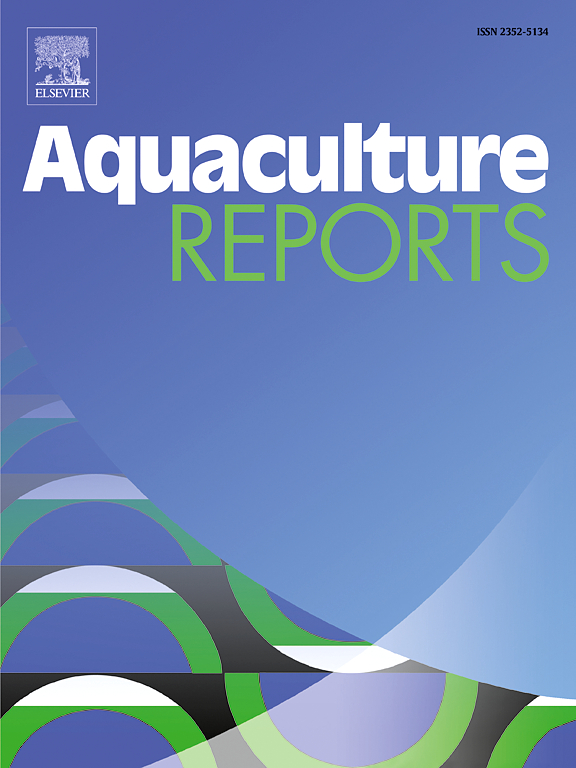养虾业换水和循环水养殖系统的新古典经济分析
IF 3.2
2区 农林科学
Q1 FISHERIES
引用次数: 0
摘要
对虾养殖业是海洋水产养殖中发展最快的行业之一,在改善中国粮食供应、促进地方经济发展、增加农民收入方面发挥了重要作用。近年来,中国虾类工厂化养殖模式发展迅速。为了更深入地了解各种养殖技术,我们利用生物经济学方法研究了不同技术在对虾工厂化养殖中的差异和经济效率。结果表明,水质因素对对虾体重有负向影响,且各因素之间存在交互作用。水交换模式显著提高了产量,适度的再循环强度也有积极作用。经济分析表明,每增加一个单位的价格会带来更高的收入:水交换模式为1.33单位,适度再循环模式为1.16单位。水交换模式每公顷产生471.34美元的净利润,每增加一个重量单位,收入增加30.3个单位。循环水模式每公顷可创收124美元,每增加一个重量单位可增加26.3个单位的收入。这为虾养殖生产者的管理决策提供了相关信息,以提高经济效益和生态效益。本文章由计算机程序翻译,如有差异,请以英文原文为准。
Neoclassical economic analysis of water exchange and recirculating aquaculture systems in shrimp farming
The shrimp farming industry, as one of the fastest-growing sectors within marine aquaculture, has played a significant role in improving China's food supply, promoting local economic development, and increasing farmers' incomes. In recent years, the factory farming model for shrimp in China has developed rapidly. To gain a deeper understanding of the various aquaculture technologies, we utilized bioeconomic methods to study the differences and economic efficiencies of different technologies in shrimp factory farming. The results indicate that water quality factors negatively impact shrimp weight, with interactions among them. The water exchange model significantly increases yield, while moderate recirculation intensity also has a positive effect. Economic analysis shows that a one-unit price increase leads to higher revenue: 1.33 units for the water exchange model and 1.16 units for moderate recirculation. The water exchange model yields a net profit of US$ 471.34 per hectare, with each additional weight unit adding 30.3 units to revenue. The recirculating water model generates US$ 124 per hectare, with each weight unit increasing revenue by 26.3 units. This provides relevant information for shrimp farming producers in their management decisions to improve both economic and ecological benefits.
求助全文
通过发布文献求助,成功后即可免费获取论文全文。
去求助
来源期刊

Aquaculture Reports
Agricultural and Biological Sciences-Animal Science and Zoology
CiteScore
5.90
自引率
8.10%
发文量
469
审稿时长
77 days
期刊介绍:
Aquaculture Reports will publish original research papers and reviews documenting outstanding science with a regional context and focus, answering the need for high quality information on novel species, systems and regions in emerging areas of aquaculture research and development, such as integrated multi-trophic aquaculture, urban aquaculture, ornamental, unfed aquaculture, offshore aquaculture and others. Papers having industry research as priority and encompassing product development research or current industry practice are encouraged.
 求助内容:
求助内容: 应助结果提醒方式:
应助结果提醒方式:


